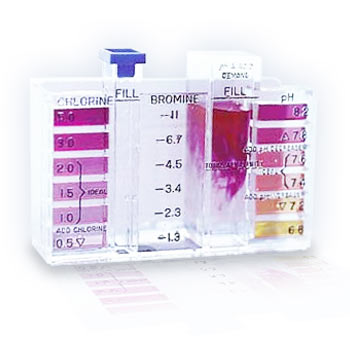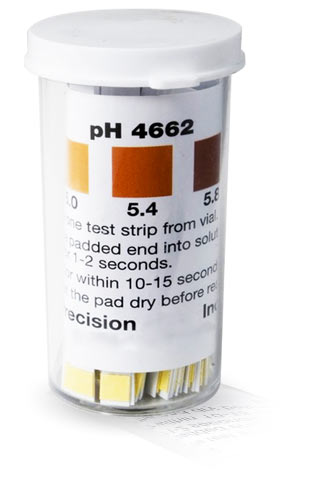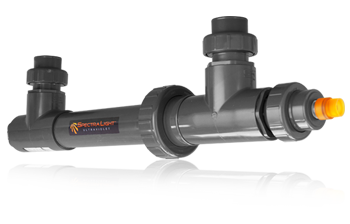Shopping Cart
All orders qualify for risk-free 30 day trial & complimentary US shipping!
-- No items so far --
Total:
0
Support
Need help? Our Pool Experts are here to help.
All orders qualify for risk-free 30 day trial & complimentary US shipping!
-- No items so far --
Total:
0
Need help? Our Pool Experts are here to help.
Does it ever seem like no matter how hard you work on your pool water, it’s never just right? Does it seem like the advice you’re getting is all wrong? If this sounds like your struggle for quality pool water, you’re not alone. Here we uncover seven secrets to pristine pool water.
Chances are your pool water test kit is missing the tests for two out of three of the critical water quality parameters. Do yourself a huge favor, and go out tomorrow and pick up a professional grade test kit (or pick one on the internet). Make sure that it includes free chlorine (the chemical that actually sanitizes your pool water) and cyanuric acid levels. See the next section for details on cyanuric acid. A test for calcium levels is also a must, but less important than the others.

If cyanuric acid is added to a swimming pool, it makes chlorine last longer in sunlight. While a little bit of cyanuric acid can be a good thing in outdoor pools (never, ever use indoors), the pool industry has gone overboard. A few years back, the pool chemical industry figured something out. Cyanuric acid is an inexpensive commodity that can be imported from China for about $750 dollars per ton. That works out to about 38 cents per pound. Cyanuric acid is then labeled as pool stabilizer, or pool conditioner, and sold for more than $4.00 dollars per pound. That’s a 1000% markup – much higher than chlorine. So chemical retailers began pushing cyanuric acid, or pool stabilizer like there was no tomorrow. Manufacturers even began pressing this cheap chemical into the chlorine tablets, labeled dichlor or trichlor. Less chlorine and more cyanuric acid means higher profit for everyone in the chemical business.
There’s just one problem. Cyanuric acid doesn’t dissipate out of pool water like chlorine. So it builds and builds over time. Once it reaches a certain level, it locks up pool chlorine completely, and leaves your pool water with absolutely no sanitizing power. Get a professional test kit today. Test your cyanuric acid levels. Then dilute your pool water with fresh water to lower cyanuric acid levels.
There are about six different types of chlorine on the market. Most contain chemicals other than pure chlorine that can lead to a host of pool water problems. We’ve already discussed trichlor and dichlor, which contain cyanuric acid. Pool owners should never use trichlor or dichlor. Besides being two of the most expensive types of chlorine, it is impossible to control the level of cyanuric acid when using them.
Calcium hypochlorite can lead to – you guessed it – too much calcium in your pool water. High calcium can cause scaling and cloudy pool water. Lithium hypochlorite is expensive, contains a lot of filler, and is only 35% available chlorine. The most pure and fast-acting type of chlorine is sodium hypochlorite. This is the type of chlorine most commonly used in world-class aquatic centers. It is the most pure form of chlorine, and does not contain unnecessary additives that can interfere with pool water chemistry. The pH is high, so muriatic acid is required to lower the pH during use. Sodium hypochlorite and muriatic acid can be added to pools manually, but are best handled with pool automation systems and pool controllers.
Algaecide has no place in pool water. Although algaecide is a high-profit item for retailers, the chemicals used in algaecides can actually do more harm than good. Furthermore, few studies have been done on the health effects of the chemicals found in algaecide. Free chlorine is one of the best algaecides for pool water.
Unlike algaecide, exhaustive studies have been done on chlorine. The bottom line is that free chlorine is safe at 0.5 ppm. Health problems were found at chlorine concentrations of 1 ppm or greater. To safely lower chlorine to 0.5 ppm, ultraviolet pool systems should be installed. The World Health Organization has stated that chlorine may be lowered to 0.5 ppm when UV is used.
The pH is the single, most important pool water parameter. If the pH is too high, chlorine cannot do its job. The goal with pool water is to operate a pool with as little chlorine as safely possible. Chlorine is most effective at a pH kept between 7.4 and 7.6. (Technically, chlorine likes a slightly lower pH, but pool water kept at about the same pH as eyes provides the most comfort for swimmers.) The pH can be difficult to control, especially when large amounts of chlorine are added. There is a trend in modern pool water sanitation systems toward ultraviolet disinfection systems and automation systems that include pH and chlorine controllers.
When organic matter such as leaves, debris, perspiration, urine and saliva combine with pool chemical sanitizers, disinfection by-products are created. These chloramines and other disinfection by-products cause burning eyes, skin irritations and foul odors. Worse yet, they have been linked to asthma, allergies and even cancer in scientific studies. The good news is that ultraviolet pool systems can lower chlorine demand and eliminate disinfection by-products found in pool water. Find out more about uv pool systems for a cleaner, safer, greener pool.

The World Health Organization speaks very highly of UV and it’s ability to kill, or inactivate microorganisms found in pool water. The WHO has stated that lower free chlorine concentrations (.5 mg/l or less) will be adequate when chlorine is used in combination with UV disinfection.
According to the WHO, ultraviolet is also effective at inactivating Giardia cysts and Cryptosporidium oocysts and UV disinfection is not considered to produce by-products, and it seems to significantly reduce the levels of chloramines.
- The World Health Organization
Every day, pool owners are moving to a cleaner, safer, greener pool with UV pool systems. It's the best thing that ever happened to pool water.
There are a number of alternatives for swimming pool sanitation. Compare UV to chlorine, ozone, ionization and other technologies here.
